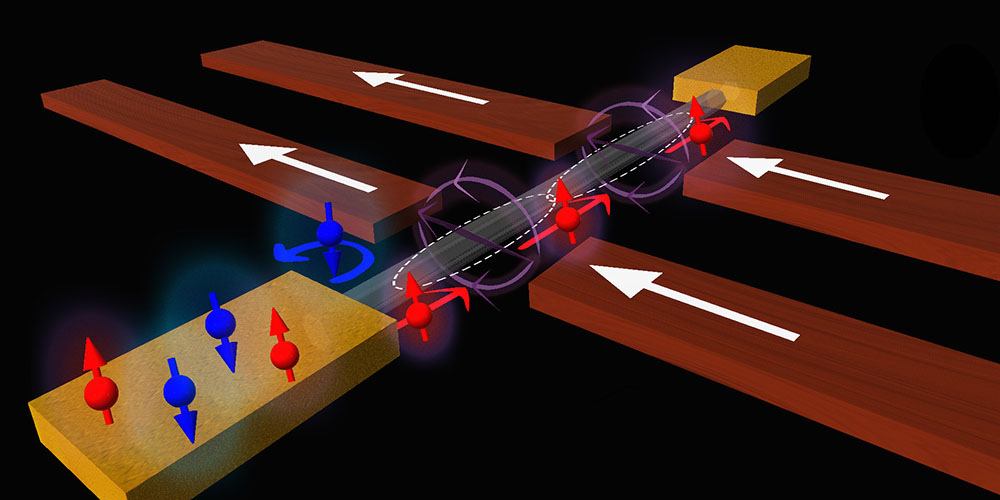suspended CVD graphene
Our paper titled “A Double Quantum Dot Spin Valve” has appeared in Communications Physics.
In this work, we reported a new approach for spin injection and spin detection in a semiconducting InAs NW device. We used two weakly-coupled semiconductor quantum dots (QDs) as electrically tunable spin injector and detectors to achieve extremely large spin polarization controlled by the ferromagnetic split-gates (FSGs). We demonstrated an optimized tunneling magnetoresistance (TMR) signal electrically tunable between +80% to –90% by exploiting the non-constant QD transmission density of states (DOS), which results in a gate and magnetic field tunable QD polarizations of ±80%, significantly larger than what is obtained with conventional spin valves.
Such large benchmark values demonstrates that electron transport in our device can be electrically tuned from predominantly spin down electrons to spin up electrons. The demonstration of large efficiencies at such small finite fields and the location-specific nature of stray fields makes the QD-FSG units ideally compatible for detecting small spin correlated non-local signals with superconducting contacts.
Arunav Bordoloi et al., Communications Physics 3, 135 (2020)

Illustration of the spin valve: Both quantum dots (dashed ellipses) on the nanowire are set by nanomagnets (brown bars) so that they only let electrons with an upward spin through. If the orientation of one of the magnets is changed, the current flow is stopped. |









